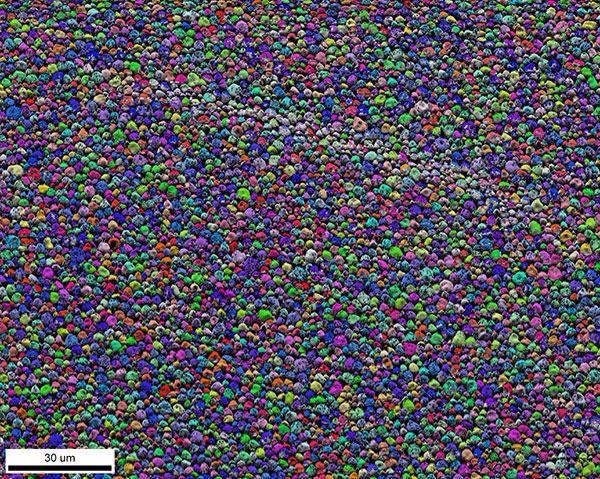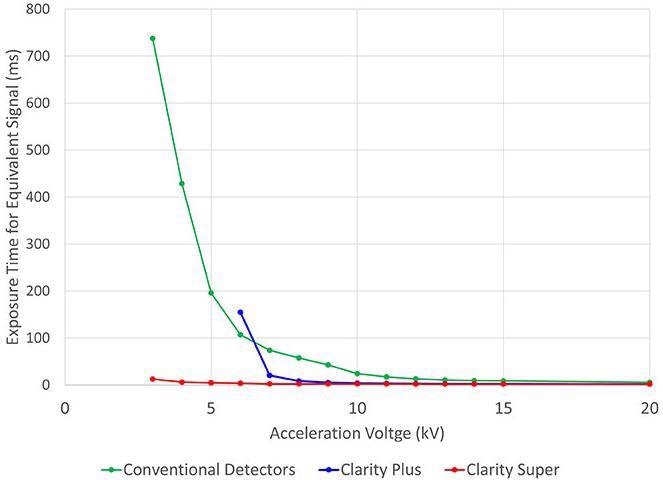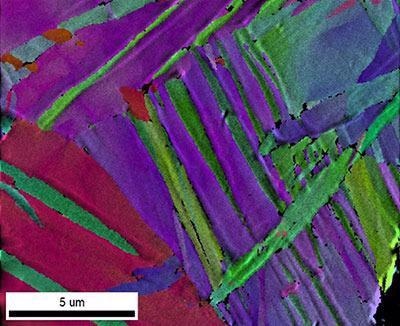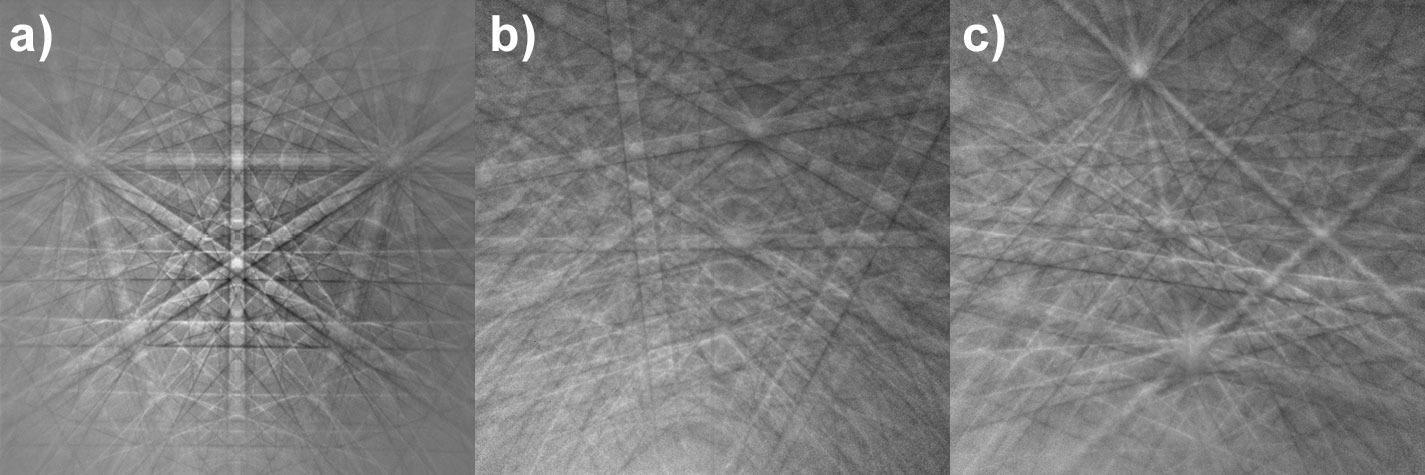The Clarity EBSD Detector is the first and only commercially available Electron Backscatter Diffraction (EBSD) detector in the world with unmatched performance down to 3 kV. This system is appropriate for ceramic, beam-sensitive perovskite, or semiconductor materials that are challenging to examine with traditional EBSD systems.
This ground-breaking series employs single-electron detection to deliver the high-fidelity EBSD pattern quality and unrivaled sensitivity users can employ to further their research.
- Clarity Plus — Effective collection down to voltages of ~7 kV
- Clarity Super — Designed for superior performance at low voltages down to 3 kV
Clarity employs a cutting-edge hybrid-pixel direct detection system with single-electron detection sensitivity.
The incident electrons create multiple electron-hole pairs inside the silicon during impact, and a bias voltage transfers the charge toward the underlying CMOS detector, where it counts each event. Individual electrons can be detected with this technology, which is not possible with traditional EBSD detectors that employ light transfer devices or phosphor screens.

EBSD image quality and IPF orientation map from beam-sensitive MAPI perovskites collected at 10 kV and 150 pA beam dose.
Image Credit: EDAX
With its zero read noise, the Clarity offers unrivaled image quality and sensitivity. It is capable of detecting and analyzing patterns with fewer than 10 e-/pixel. This makes the Clarity excellent for beam-sensitive samples and applications with low beam requirements, such as hybrid organic-inorganic perovskite solar cells and ceramics.
The Clarity Super is also ideal for lower kV acquisition, which enhances spatial resolution for fine-grained materials.

Sensitivity comparison of Clarity with conventional phosphor-based detectors.
Image Credit: EDAX
Features and Benefits
Beam Sensitive Materials Analysis
- To examine non-conductive materials like ceramics that charge under standard beam currents, low-vacuum SEM settings or conductive coatings are not required
- Obtains high-quality EBSD patterns and maps at low beam currents for studying the impact of grain boundaries, grain size, and crystal orientation
- Operating at low beam currents and energies reveals never-before-seen structures while preventing damage

EBSD Image Quality and IPF orientation map from cryo-forged nanotwinned titanium collected at 7 kV and 200 pA beam dose for improved spatial resolution.
Image Credit: EDAX
Traditional Materials
- Without employing optical or phosphor lenses, it is possible to gather exceedingly clear EBSD patterns
- At lower acceleration voltages, spatial resolution is improved
- To achieve outstanding EBSD pattern quality, high-dynamic-range imaging is used
Conclusion
For EBSD pattern collection and mapping, the Clarity EBSD Detector Series offers unrivaled sensitivity and pattern quality. It allows for the investigation of beam-sensitive materials and offers quantifiable data on electron intensities spanning the widest range of beam energies.

High-quality EBSD patterns collected with Clarity from a) silicon, b) olivine, and c) quartz.
Image Credit: EDAX